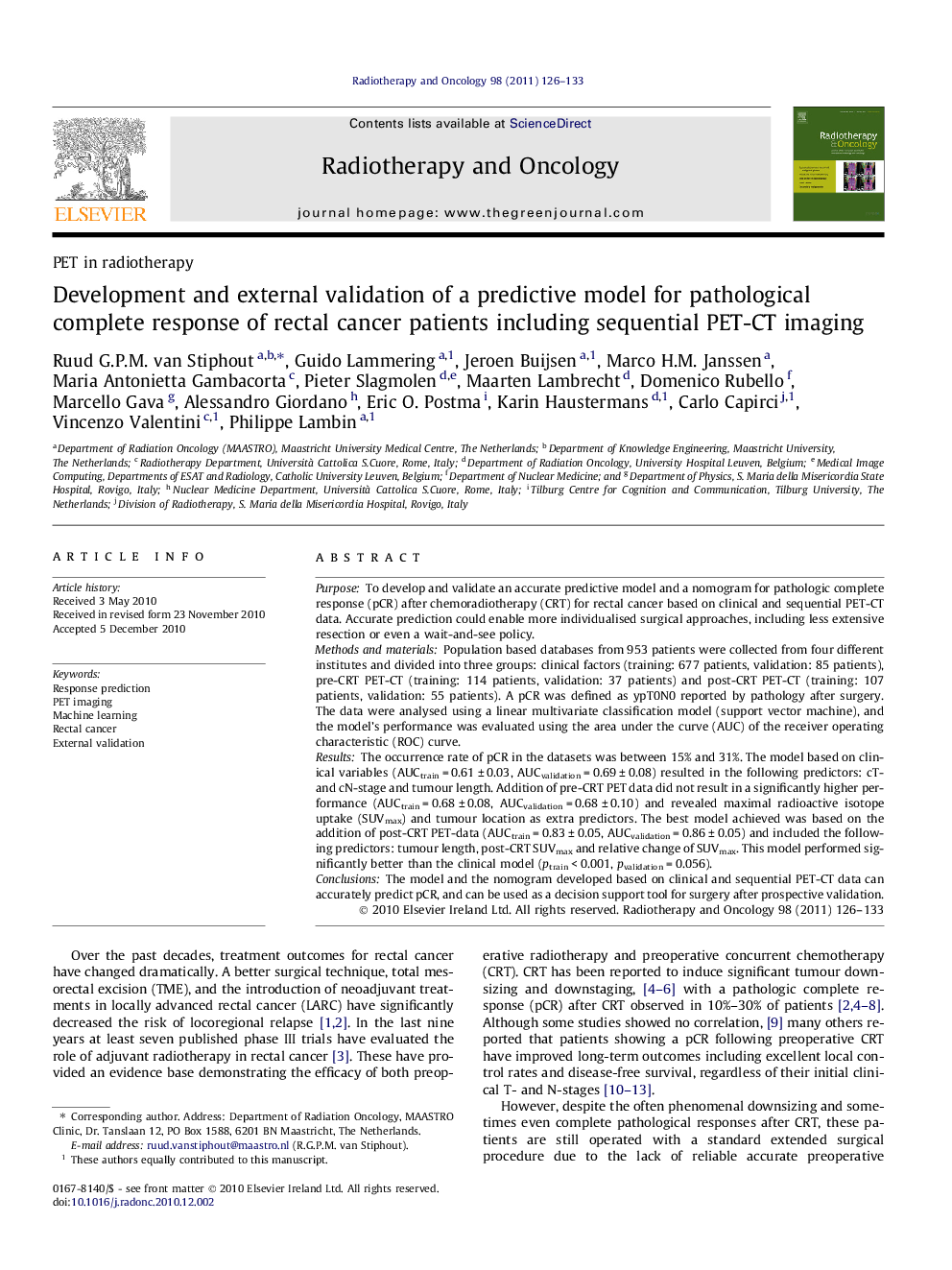| کد مقاله | کد نشریه | سال انتشار | مقاله انگلیسی | نسخه تمام متن |
|---|---|---|---|---|
| 2158677 | 1090841 | 2011 | 8 صفحه PDF | دانلود رایگان |

PurposeTo develop and validate an accurate predictive model and a nomogram for pathologic complete response (pCR) after chemoradiotherapy (CRT) for rectal cancer based on clinical and sequential PET-CT data. Accurate prediction could enable more individualised surgical approaches, including less extensive resection or even a wait-and-see policy.Methods and materialsPopulation based databases from 953 patients were collected from four different institutes and divided into three groups: clinical factors (training: 677 patients, validation: 85 patients), pre-CRT PET-CT (training: 114 patients, validation: 37 patients) and post-CRT PET-CT (training: 107 patients, validation: 55 patients). A pCR was defined as ypT0N0 reported by pathology after surgery. The data were analysed using a linear multivariate classification model (support vector machine), and the model’s performance was evaluated using the area under the curve (AUC) of the receiver operating characteristic (ROC) curve.ResultsThe occurrence rate of pCR in the datasets was between 15% and 31%. The model based on clinical variables (AUCtrain = 0.61 ± 0.03, AUCvalidation = 0.69 ± 0.08) resulted in the following predictors: cT- and cN-stage and tumour length. Addition of pre-CRT PET data did not result in a significantly higher performance (AUCtrain = 0.68 ± 0.08, AUCvalidation = 0.68 ± 0.10) and revealed maximal radioactive isotope uptake (SUVmax) and tumour location as extra predictors. The best model achieved was based on the addition of post-CRT PET-data (AUCtrain = 0.83 ± 0.05, AUCvalidation = 0.86 ± 0.05) and included the following predictors: tumour length, post-CRT SUVmax and relative change of SUVmax. This model performed significantly better than the clinical model (ptrain < 0.001, pvalidation = 0.056).ConclusionsThe model and the nomogram developed based on clinical and sequential PET-CT data can accurately predict pCR, and can be used as a decision support tool for surgery after prospective validation.
Journal: Radiotherapy and Oncology - Volume 98, Issue 1, January 2011, Pages 126–133